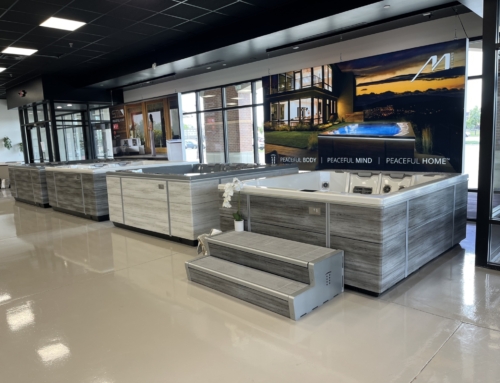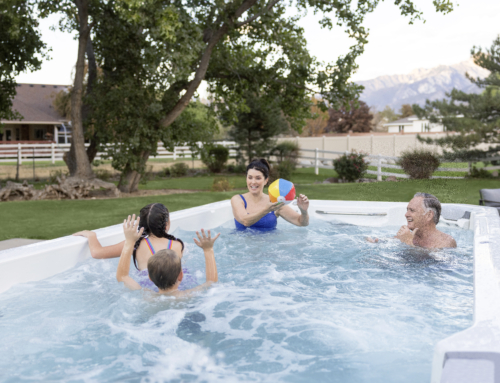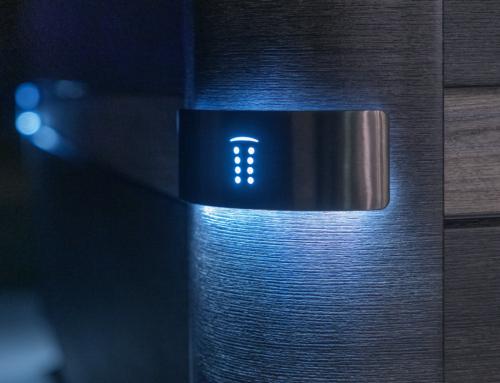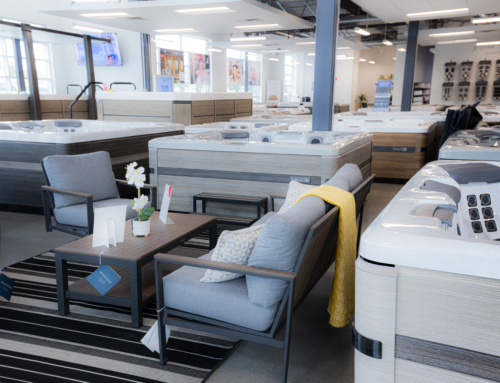In the 2017 State of the Industry poll conducted by Aqua Magazine, a startling 60% of spa retailers reported switching manufacturers. Though overall hot tub and spa sales increased for many dealers, brand loyalty trends appear on the decline. What does this mean for the dealer-manufacturer relationship?
As in all partnerships, two-way communication and support are vital. Here, we look at what retailers have to say about their suppliers and what both parties can to do to rebuild a loyal business relationship.
A Decline in Dealer Loyalty
Whether the results come as a surprise or not, dealer-manufacturer relations are not at their best. 60% of retailers polled stated that they’ve switched spa lines for a variety of reasons, despite overall sales growth across the board. In fact, 67% of the businesses surveyed reported an increase in sales in the last year. However, they cite a stronger economy and improved sales practices as the main cause of growth, not their manufacturer.
If sales are as strong as they are, why are so many retailers severing ties with their manufacturers? The survey results attribute three prominent grievances with suppliers as leading causes of brand loyalty decline. Of the businesses who recently switched suppliers,
- 18% reported limited marketing support;
- 18% stated lack of product innovation;
- 17% cited a weak company message.
Additionally, retailers expressed the need for more consistent service support, including maintenance guarantees and warranties. These are not new issues in the dealer-manufacturer relationship; however, retailers seem to be placing greater urgency on finding solutions to these problems, often leaving one spa brand for another.
Bridging the divide between retailers and suppliers means assessing these problems together. Communication and understanding is critical in any business relationship. Before a favorable solution can be reached, the issues must first be heard.
Calling for More Manufacturer Support
Focused Branding and Marketing Assistance
The SOI poll asked participants what the hardest part of being a spa retailer is. One featured survey response reads: “The lack of marketing support from every hot brand we have ever sold over the last 30 years. Everyone leaves it up to the dealer, which is a general problem throughout the entire industry.”
Claims like this are not uncommon—but why? Manufacturers and vendors play a symbiotic role in the sale of merchandise, meaning that they are both integral in achieving a common goal. Unfortunately, the two parties don’t always agree on the burden of responsibility.
Advertising, in particular, is a grey area in which both dealers and manufacturers believe the other should step up their initiative. On the one hand, manufacturers expect dealers to reach their local consumer base to bring customers in the door. On the other, retailers expect more product marketing efforts from the manufacturer to make their brand more desirable. What we’re left with is a supply chain conundrum that breeds resentment on both sides.
Manufacturers and vendors play a symbiotic role in the sale of merchandise, meaning that they are both integral in achieving a common goal.
From the manufacturer point-of-view, the current model supports a strong retail margin that should provide the dealer extra opportunity to invest in local promotion. The hot tub category is different than say cars in this respect, where car manufacturers who do provide more extensive marketing/advertising on the brand side sell their products to dealers at a much thinner margin.
Dan Sjoblom, VP of Marketing for Bullfrog Spas, recognizes the case as it stands. “We’re sensitive to the challenge our dealer partners face as we work together to drive store traffic and promote our brand. The strongest and most effective spa brands are always built on real, consumer-focused value supported by significant manufacturer marketing investment. The power of that investment is realized when we effectively partner with our dealers to develop and implement targeted market level promotional plans.”
Speaking for Bullfrog Spas, Sjoblom continues, “We are committed to continually funding campaigns and messages that drive brand insistence and we’re appreciative of the great work our dealers do in carrying those messages deeper into their markets.”
From the other angle though, spa retailer Scott Long of Wet & Wild Pools and Spas in New Philadelphia, OH, still sees room for improvement: “The manufacturers evidently believe that we professional pool and spa dealers are going to continue to do all of the work to represent and build their brand names and receive none of the reward. They are in for a rude awakening.”
Four years later, it would appear that the rude awakening has begun. As loyalty numbers drop, manufacturers may have to rethink their branding efforts (or their margins) if they want to continue to maintain productive relationships with their distributors.
Increased Product Innovation
In the 2017 spa industry poll, some dealers noted that a decline in brand awareness and product innovation led them to change manufacturers. Most manufacturers strive to provide the latest style trends and technologies; if they don’t understand the consumer market, however, then they quickly fall behind. This leaves the dealer to sell products the public isn’t interested in.
Additionally, some retailers complain of customer service barriers, stating that some manufacturers fail to establish a consumer support network to make installing, using, and maintaining products easier. They suggest that manufacturers “wanting to be successful must be prepared to invest time and energy and willing to step up to make sure there are no barriers to using your products.”
Strong Company Message
Finally, dealers want to work with manufacturers that have a strong brand message that aligns with their own ideals. From understanding the dynamics of consumer relations to establishing their brand as a leader within the industry, manufacturers need an image and a business philosophy that appeals to vendors. Retailers are not only selling a product, but a brand.
What Manufacturers Have Gotten Right
Mutual Sales Support
Of course, not all manufacturers are falling short in their dealer relationships. While some retailers struggle to find a compatible supplier, others have maintained relationships from day one. Speaking with Nick Kasten, sales and marketing manager of Arizona Hot Tub Company in Prescott Valley, AZ, he explains: “I believe firmly that there are leaders and followers in any industry, and I can safely say that both vendors I have are unequivocally leaders. Leaders that tend to be progressive and anticipate what consumers want, which is why we have them on our floor.”
Reciprocity appears to be the key to a successful dealer-manufacturer relationship, that both businesses have something to learn from each other.
Until adding a second line in 2015, the Arizona Hot Tub Company had worked exclusively with one manufacturer since opening their doors in 2003. Kasten espouses that both of their suppliers offer innovative marketing and sales strategies while taking cues from dealer experience. This reciprocity appears to be the key to a successful dealer-manufacturer relationship, that both businesses have something to learn from each other.
Positive Incentives
Manufacturers who understand their local markets and dealer needs tend to be more successful business partners. However, this isn’t always enough. Beyond an established support network, supplier should also extend sales incentives and vouchers to help retailers push more product. As Mike Moore, former VP of Marketing for Advantis Technologies (a pool and spa chemical manufacturer) says: “Incentives are important and they come in many forms. We offer several at any time: gift certificates, product vouchers, vacation travel, and seasonal rebates on select products that help dealers be more competitive. These and others are key to properly supporting your retail community.”
Incentives show a sign of good faith in the manufacturer’s effort to make sales easier for retailers. Ultimately, both the dealer and the supplier have a common goal: sell more hot tubs. When manufacturers help retailers make their prices more competitive, both sides benefit.
The Dealer-Manufacturer Relationship Is a Two-Way Street
Restoring trust between dealers and manufacturers requires a set of mutual tenets and a sense of partnership. Every aspect of the relationship is give-and-take; and when one side helps the other, everybody gains. Through, clear communication and a committed effort to understanding each other’s goals, strategies, principles and needs, both retailers and suppliers can work to regain confidence in their partnership.
A Mutual Conversation
On the success of his store’s manufacturer relationship, Nick Kasten writes, “It is a two-way street. They push us to get better, and give us all these new ideas to improve on the marketing and sales side, but I think it’s fair say we push them as well.” In reciprocating their ideas, the two companies have forged a unique bond that pushes both businesses forward.
When businesses establish a clear, coordinated sales strategy, they can focus their efforts on innovation, both in production and marketing.
Kasten goes on to conclude, “Without question the most important thing in any relationship whether personally or professionally is communication. I can say that both [our] manufacturers do a pretty good job, but we can always get better.” The best way to foster open communication is to make a concerted effort to improve dialogue, to listen to as well as share concerns.
Pursuing a Common Goal: Customer Satisfaction
In another Aqua interview, Rick Singleton, owner of Southern Pools & Spas in Abingdon, VA, explains, “Our relationships are based on product satisfaction. We add a new line when we feel it will benefit our customers.” At the end of the day, the decisions of both manufacturer and vendor should be based on what’s best for the customer. When businesses establish a clear, coordinated sales strategy, they can focus their efforts on innovation, both in production and marketing.
Closing the Divide
The findings in the 2017 Aqua Magazine SOI survey illustrate the consequences of communication breakdowns and differing expectations between dealers and manufacturers. However, it’s not all bad news. Both retailers and suppliers ideally focus their efforts on a sustainable partnership, listening to one another’s needs and seeking proactive solutions to benefit sales.
Many spa businesses continue to maintain healthy, longstanding relationships with their manufacturers. But for those who are struggling, remember that it’s a two-way street: mutual success hinges on removing barriers and instituting a clearly established supply chain with coordinated brand and local marketing efforts from both sides.








Leave A Comment